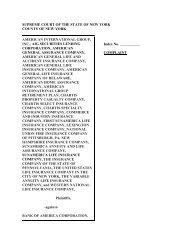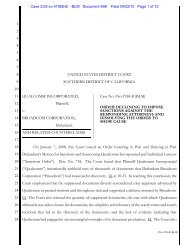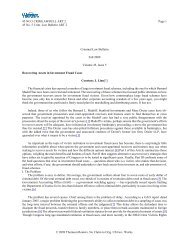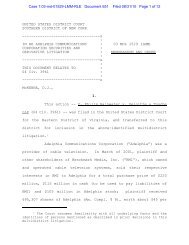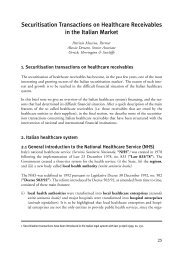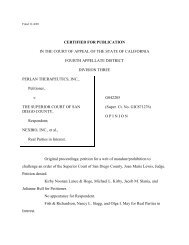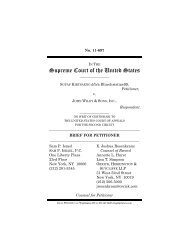Public Charter Schools Borrowing With Tax-Exempt Bonds, Second ...
Public Charter Schools Borrowing With Tax-Exempt Bonds, Second ...
Public Charter Schools Borrowing With Tax-Exempt Bonds, Second ...
Create successful ePaper yourself
Turn your PDF publications into a flip-book with our unique Google optimized e-Paper software.
competing public schools do not serve (either through a unique curriculum or<br />
delivery model or higher quality, or a combination of all three), and sufficient<br />
demand for the program is evidenced by a well documented and regularly updated<br />
waiting list. Other factors include the retention rate between grades (higher is<br />
better), the growth trend of the school’s enrollment area (growing is better), student<br />
performance relative to competing programs, the program’s reputation (researchbased<br />
validation and positive press coverage) and the school’s relationship with<br />
parents and other community constituents (indicating support). Finally, the<br />
prospect of future competition is also analyzed (i.e., is the number of charters<br />
limited, do other barriers to entry exist, or could competing schools be established<br />
in the future?).<br />
3. Management Team and Organizational Structure. The strongest public charter<br />
school management team represents a broad array of organizational expertise,<br />
including programmatic, financial, managerial, operational, and legal knowledge.<br />
Leadership is vital; however, over-dependence on the skills of one founder can<br />
jeopardize a school’s longevity. Thus, effective cross-training of key personnel,<br />
institutionalized management policies and practices, and effective financial, debt<br />
management, and operational controls all benefit the credit rating process. In order<br />
to borrow using tax-exempt bonds, the school must be organized as a nonprofit<br />
corporation exempt under Section 501(c)(3) of the Internal Revenue Code or be<br />
characterized as an instrumentality of the government. Both individual schools and<br />
larger CMOs (or networks of collectively managed charter schools) may be eligible<br />
to borrow. 20<br />
4. Financial Management and Operating History. A minimum of three to five<br />
years operating history, ideally having successfully completed at least one charter<br />
renewal process, is uniformly viewed as the strongest scenario for investment grade<br />
credit rating. Sound financial management practices (as evidenced by prior financial<br />
reports and the existence of strong internal controls and procedures) are equally<br />
important, the former not likely possible without the latter. Rating agencies have<br />
uniformly acknowledged that the most prominent cause of public charter school<br />
failure is financial mismanagement and thus focus heavily on these characteristics<br />
in the rating process. 21 Important factors in this analysis include maintenance of<br />
<strong>Public</strong> <strong>Charter</strong> <strong>Schools</strong> <strong>Borrowing</strong> <strong>With</strong> <strong>Tax</strong>-<strong>Exempt</strong> <strong>Bonds</strong>, <strong>Second</strong> Edition 27



